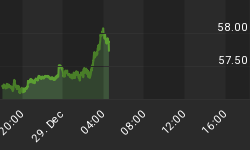Using Stochastics and Support/Resistance Levels for Successful Trades in a Tough Market
by jayp and yahoogle at TradingdaNumbas.com
If you are an active trader, how successful was your trading on August 12 - last week's FOMC announcement day? Were you able to take advantage of the market's rapid upward move in the hours prior to the announcement? Did you know where to enter the trade, and more importantly where to exit?
 The chart shown in Figure A was presented to members of Trading da Numbas prior to the August 12 trading session. Our members were prepared for the S&P's advance, knowing the key support level that provided an entry point and the likely points at which the move could terminate. Thus, they were able to ride the S&P futures contract price from 991 to 1006 and ride it again later in the day from 1001 to 1011. (For those who do not trade S&P futures, this equates to a total of 25 ES points, or $1,250 per ES contract with just two trades.)
The chart shown in Figure A was presented to members of Trading da Numbas prior to the August 12 trading session. Our members were prepared for the S&P's advance, knowing the key support level that provided an entry point and the likely points at which the move could terminate. Thus, they were able to ride the S&P futures contract price from 991 to 1006 and ride it again later in the day from 1001 to 1011. (For those who do not trade S&P futures, this equates to a total of 25 ES points, or $1,250 per ES contract with just two trades.)
 We have prepared a video based on the market action of August 11 and 12, which we hope will provide insights for your own trading. It begins by showing how we used a combination of various technical analysis indicators (some of which are shown in Figure B) to identify the potential for an upward move even as many in the trading world were bearish.
We have prepared a video based on the market action of August 11 and 12, which we hope will provide insights for your own trading. It begins by showing how we used a combination of various technical analysis indicators (some of which are shown in Figure B) to identify the potential for an upward move even as many in the trading world were bearish.
It then shows how the market's response to key levels in the early hours of the trading session kept us bullish until the market reached an area of consolidation ahead of the FOMC announcement. (See Figure C.) Finally, it shows how our grounding in Elliott Wave analysis prepared us for the second trade of the day when the market found post-announcement support near 1001 and subsequently popped up to 1011.

Watch the video to see how you too can make use of stochastic indicators, overbought and oversold levels, support/resistance levels, basic Elliott Wave counting, and recent market action to capitalize on more trading opportunities.
As is always our practice, this article and the video show the same charts and indicators that TdN members saw in real-time during or prior to market action.
Please come and visit our thriving community of traders at www.TradingdaNumbas.com and take advantage of our limited introductory one-month trial membership. This trial offer only has limited spaces available and will be on a first come first served basis.

















